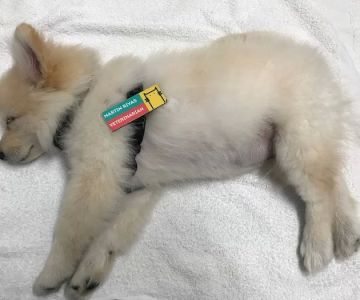How to Help Your Pet Lose Weight Safely
As a pet owner, one of the most concerning things I’ve ever faced is seeing my furry friend struggle with their weight. Obesity in pets is a growing issue, and it can lead to many health problems, just like it does in humans. I’ve learned over time that helping your pet lose weight safely requires patience, a balanced approach to diet, and a consistent exercise routine. If you’re in a similar situation, let me share some of the things that have worked for me and how you can help your pet achieve a healthy weight without compromising their health.
1. Understanding Pet Obesity and Its Risks
Before diving into solutions, it’s essential to understand why managing your pet’s weight is so crucial. Obesity in pets isn’t just about appearance; it can lead to serious health conditions such as diabetes, heart disease, arthritis, and even a shorter lifespan. When I first realized my dog was gaining weight, I was shocked by how quickly it could happen, and I wasn’t fully aware of how much it could impact her health.
Overweight pets often struggle with joint issues, difficulty breathing, and decreased energy levels. As a pet owner, it’s our responsibility to ensure they live a long, happy, and healthy life. Recognizing the signs of obesity early on is the first step. If your pet is visibly overweight, has trouble moving, or is less active than usual, it might be time to take action.
2. How to Determine if Your Pet Needs to Lose Weight
One of the first things I did when I suspected my pet was overweight was to assess her condition using a body condition score (BCS). The BCS is a method used by veterinarians to assess whether a pet is underweight, overweight, or at a healthy weight. It’s based on a 1-9 scale, with 1 being extremely thin and 9 being extremely obese.
In my case, I noticed that my dog, who had always been quite active, started becoming less energetic and had difficulty running. Her ribs weren’t as easily felt, and there was more fat covering her body. I realized she likely fell into the overweight category, which prompted me to consult with a vet.
To check your pet’s body condition at home, you can follow these guidelines:
- Ribs: You should be able to feel your pet’s ribs easily, but they should not be visibly protruding.
- Waist: When viewed from above, your pet should have a visible waistline, not a straight back.
- Abdomen: When viewed from the side, your pet’s abdomen should be tucked upward, not hanging down.
3. The Role of Diet in Safe Weight Loss for Pets
Diet is one of the most important factors in helping your pet lose weight safely. When I started looking into weight loss for my dog, I realized that portion control, as well as the type of food, made all the difference. The first step I took was to consult with my veterinarian to choose a suitable food that would help my pet lose weight without depriving her of essential nutrients.
Here are some tips for adjusting your pet’s diet:
1. Choose a High-Quality, Low-Calorie Diet
Not all pet foods are created equal, and the quality of your pet’s food is just as important as the quantity. I switched my dog to a low-calorie, high-protein food designed specifically for weight management. These foods are formulated to help pets feel full while still providing the nutrients they need to stay healthy. Consult your vet to find the best options for your pet’s breed and health condition.
2. Measure Food Portions Carefully
Overfeeding is one of the most common reasons pets gain weight, and I learned the importance of portion control. I started measuring out my dog’s food to ensure she was getting the right amount based on her weight and activity level. It’s easy to overfeed, especially if you’re giving treats or scraps, so I recommend using a food scale or measuring cup to stay on track.
3. Avoid Giving Table Scraps or Unhealthy Treats
It’s tempting to give our pets extra snacks, but table scraps and unhealthy treats can be a major contributor to weight gain. I’ve learned that healthy, low-calorie treats like baby carrots or specially formulated pet snacks are a great alternative. These treats are not only nutritious but also help my dog feel satisfied without adding unnecessary calories.
4. Exercise and Activity: Key to Safe Weight Loss
Exercise is just as crucial as diet when it comes to helping your pet lose weight safely. I quickly discovered that getting my dog to be more active was the key to helping her shed the extra pounds. Regular exercise not only helps burn calories but also improves overall health by strengthening muscles and joints, reducing stress, and boosting mood.
1. Start Slow with Regular Walks
If your pet isn’t used to regular exercise, start slow. I began by taking my dog on daily walks, gradually increasing the length and intensity as she became more comfortable. Consistent walking, even for short distances, can significantly help with weight loss.
2. Add Fun Activities for Mental Stimulation
Keeping your pet mentally stimulated is just as important as physical exercise. I introduced interactive games and toys that encouraged my dog to move and think. Games like fetch, hide-and-seek, or using puzzle toys that release treats can keep your pet engaged and active. These activities also help burn calories and reduce boredom, which can sometimes lead to overeating.
3. Consistency Is Key
One of the biggest lessons I learned was the importance of consistency. Weight loss takes time, so I made sure that my dog had regular exercise and a consistent feeding schedule. The more routine we had, the more progress we made together.
5. Regular Veterinary Check-ups and Monitoring Progress
Finally, regular check-ups with the vet are essential when helping your pet lose weight. Your vet can track your pet’s progress, adjust their diet and exercise plan, and ensure that your pet is losing weight safely. It’s also important to monitor your pet’s health throughout the process, as sudden weight loss or gain can be a sign of an underlying health issue.
In my case, I took my dog for regular vet visits, and the vet helped adjust her weight loss plan as needed. These visits not only provided valuable feedback but also helped me stay on track with the weight loss journey. Your veterinarian can also perform health checks to ensure that your pet’s weight loss is not affecting their overall health.
6. Success Stories: Real-Life Examples of Safe Weight Loss
When I started helping my dog lose weight, I found it motivating to hear about other pets that had successfully lost weight. I read several success stories about cats and dogs who had been able to lose weight through diet and exercise, and it gave me hope. One of the most inspiring stories I came across was about a cat named Max, who was over 20 pounds overweight. His owner worked with their vet to create a customized plan, and over the course of several months, Max lost the excess weight and became much more active and playful.
Hearing these success stories reinforced my belief that with patience, dedication, and the right approach, weight loss is possible for pets. It was also a reminder that every pet is different, and it’s important to tailor the weight loss plan to their specific needs and health status.











